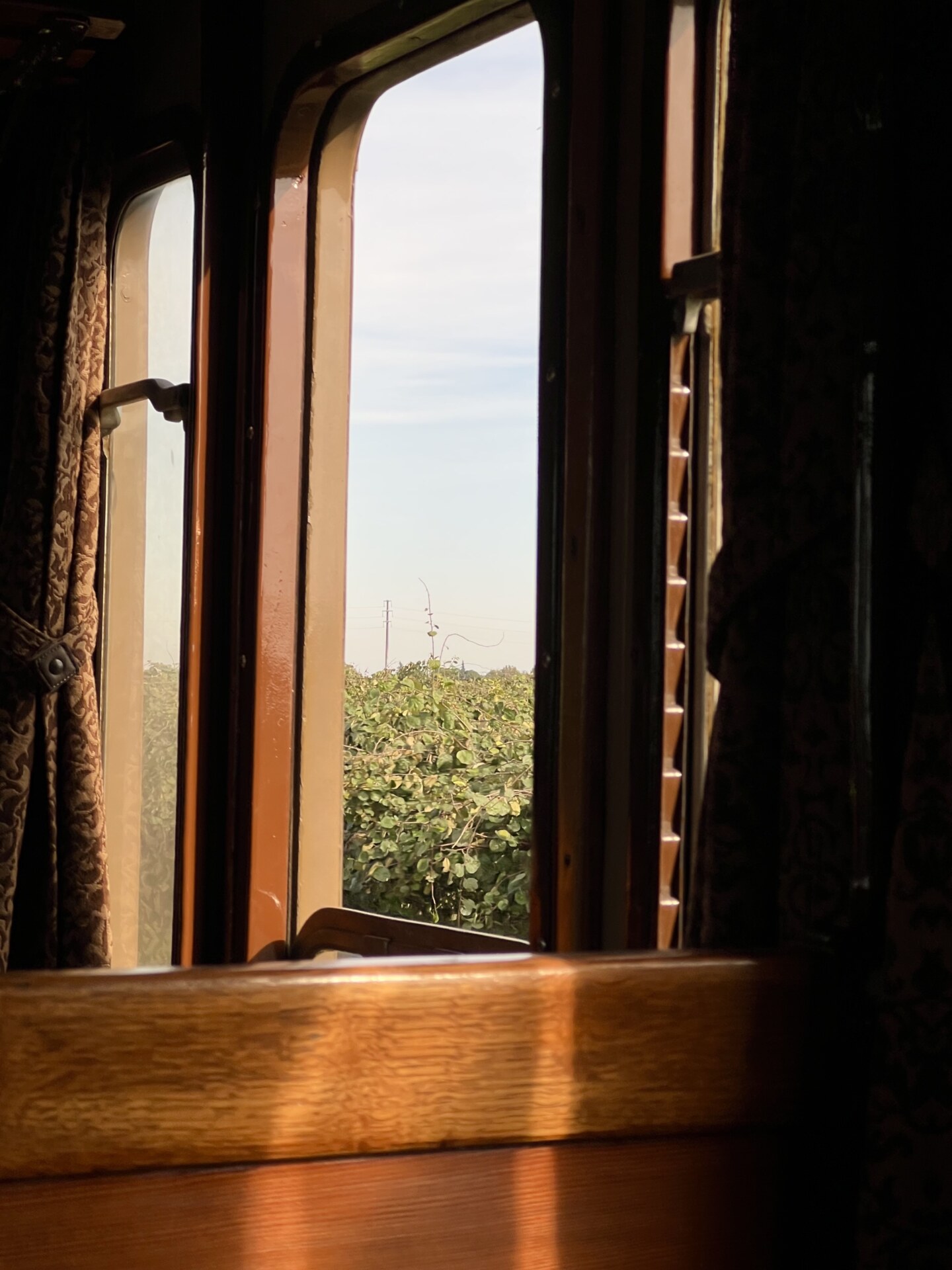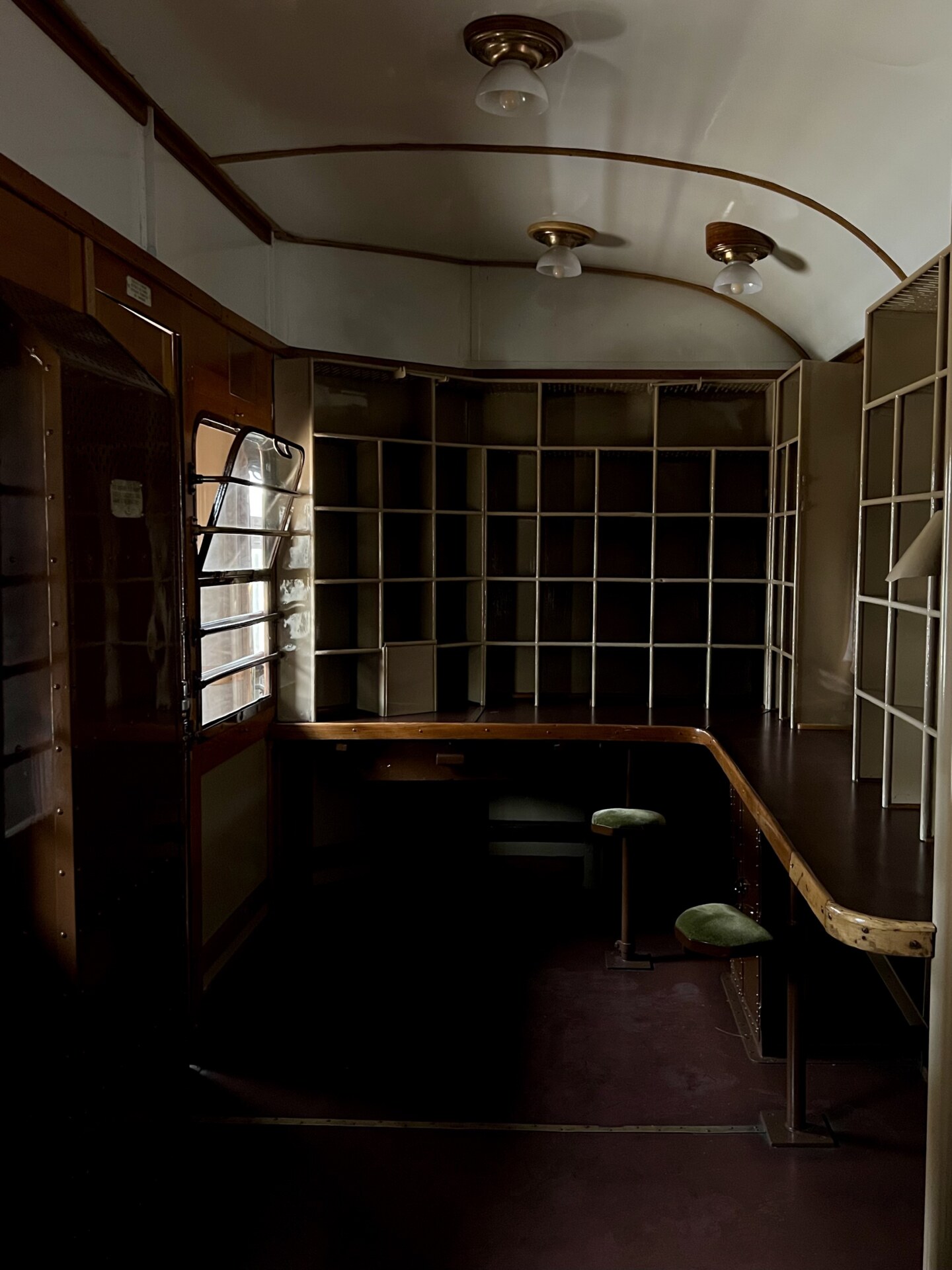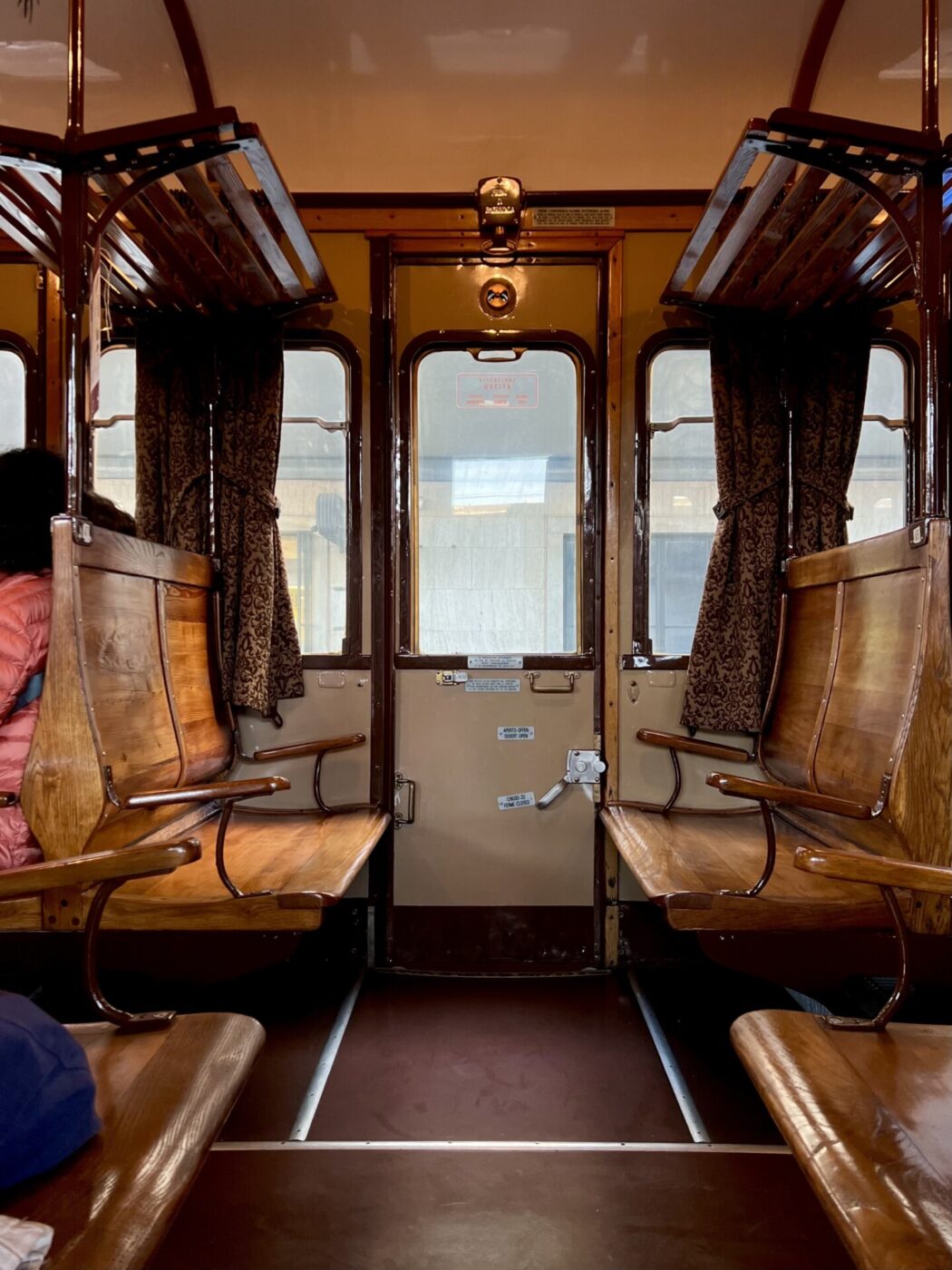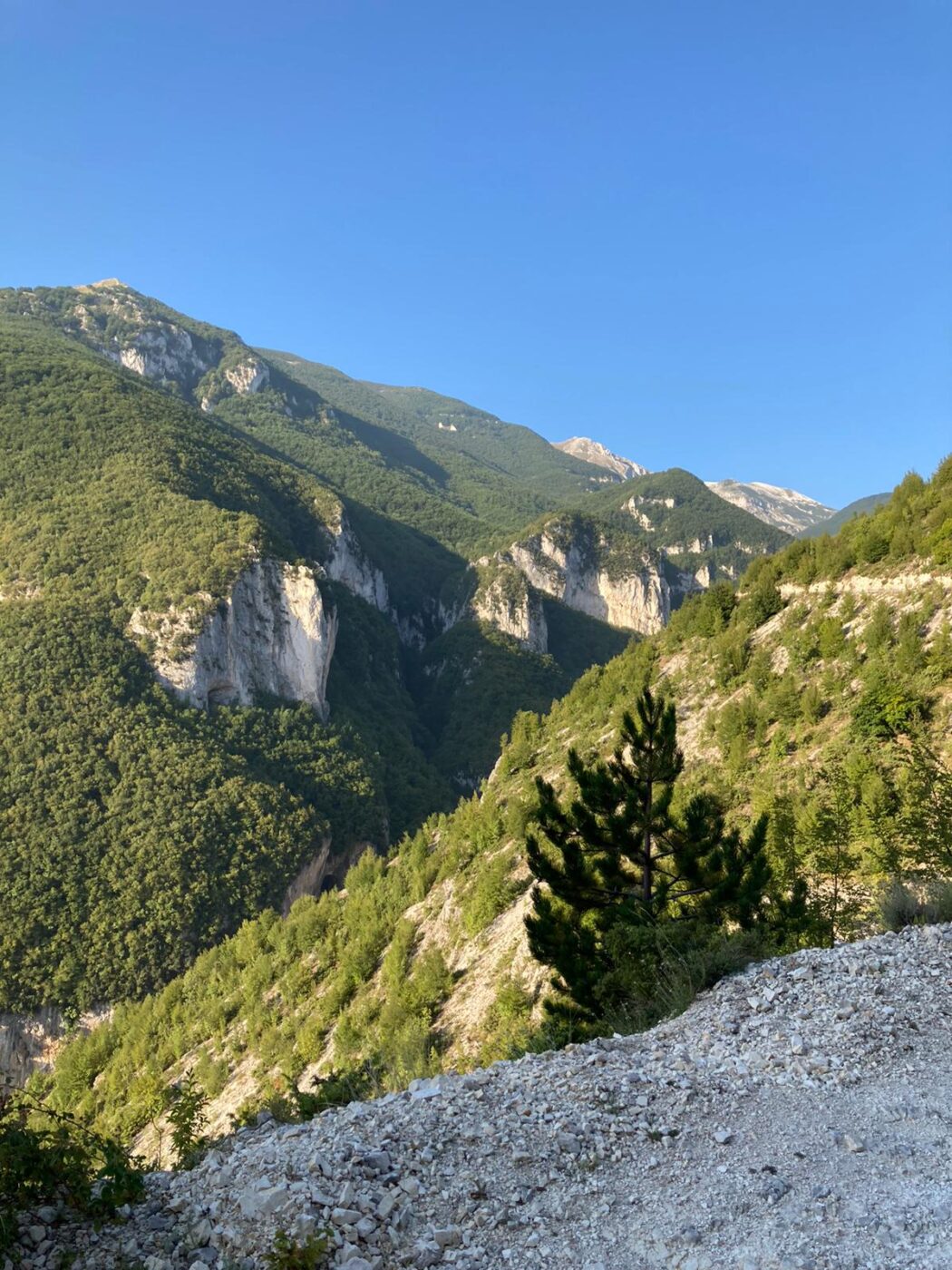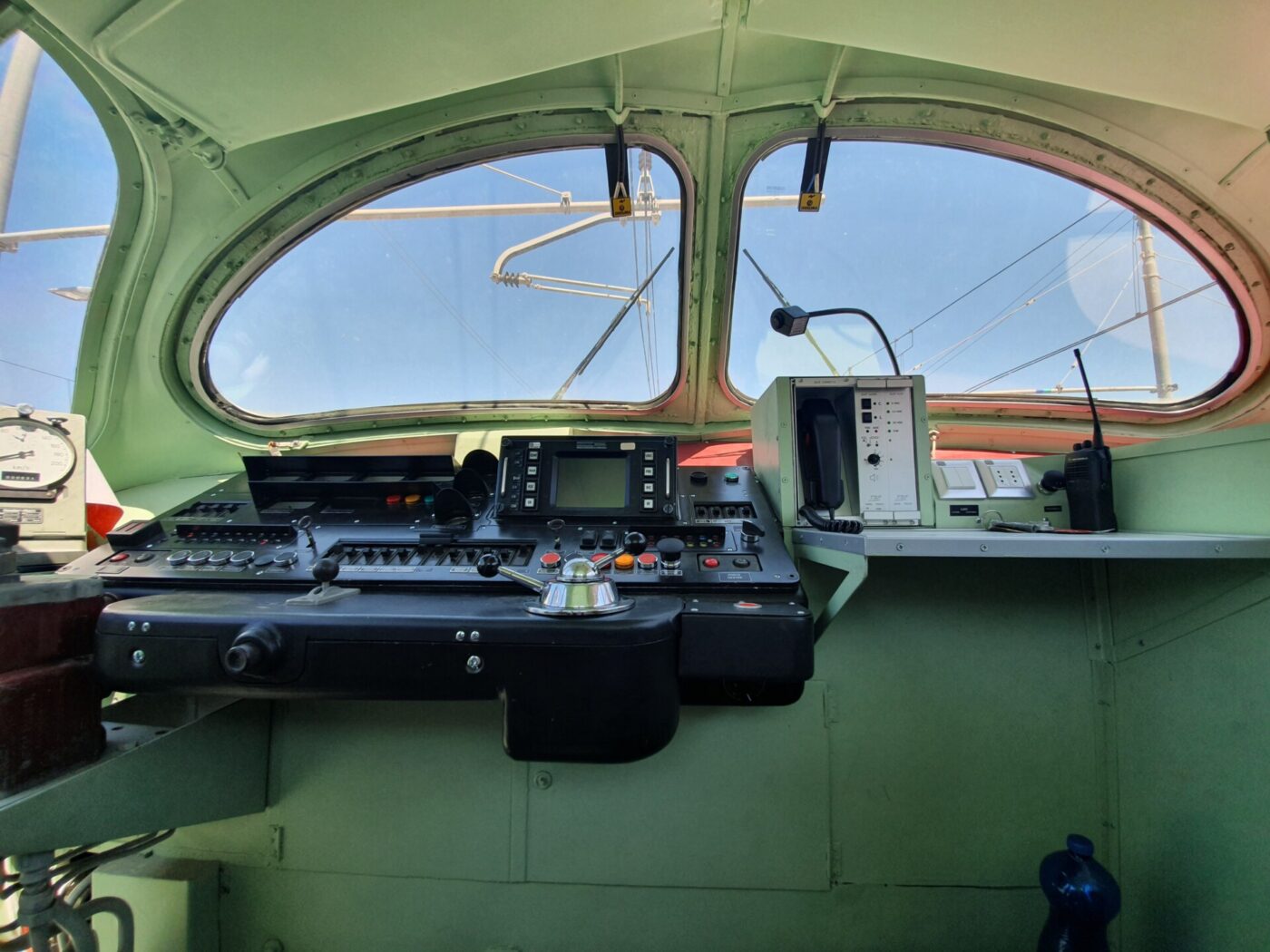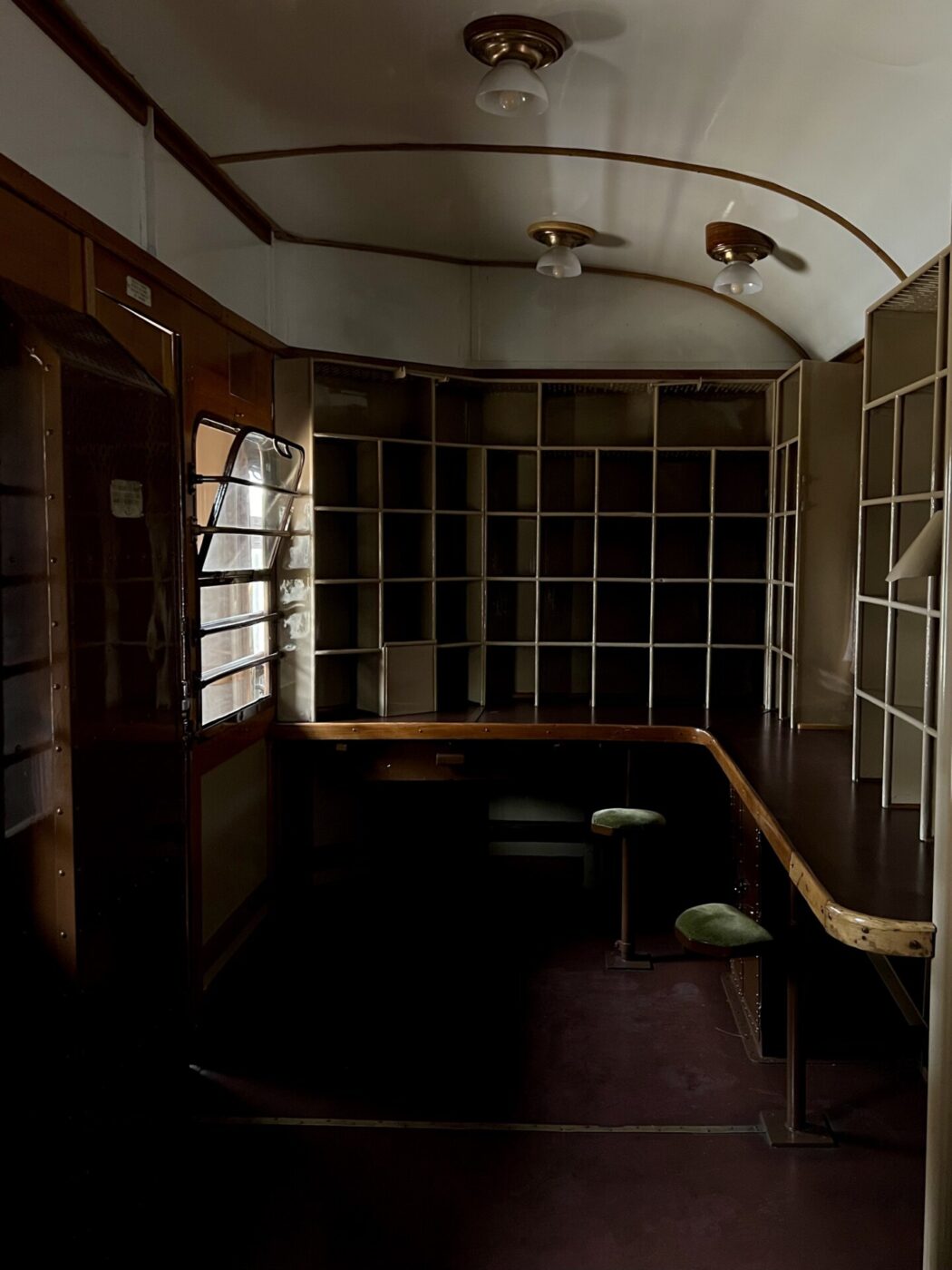IL TRENO DI DANTE
Florence to Ravenna
Dante Alegheri once walked the 136 kilometers from his hometown of Florence to Ravenna. To follow in his footsteps–not literally, don’t worry–you can hop aboard the vintage “One Hundred Doors” train, whose wooden interiors once carried soldiers, doctors, and others during the wars. The tranquil, just-over-three-hour journey travels along a railway inaugurated in 1893 and passes through four quaint towns–Borgo San Lorenzo, Marradi, Brisighella, and Faenza–before reaching Ravenna, a fantastic destination for sandy shores, Byzantine beauty, and a surprisingly contemporary art scene. You can hop out at each town or ride through to the end. Enjoy sweeping views of the Apennines and Romagna hills out the window that look surprisingly similar to how Dante would’ve seen them some 800 years ago.
*The train is currently out of service due to the major floods of Ravenna last year. Check their official website for more information.
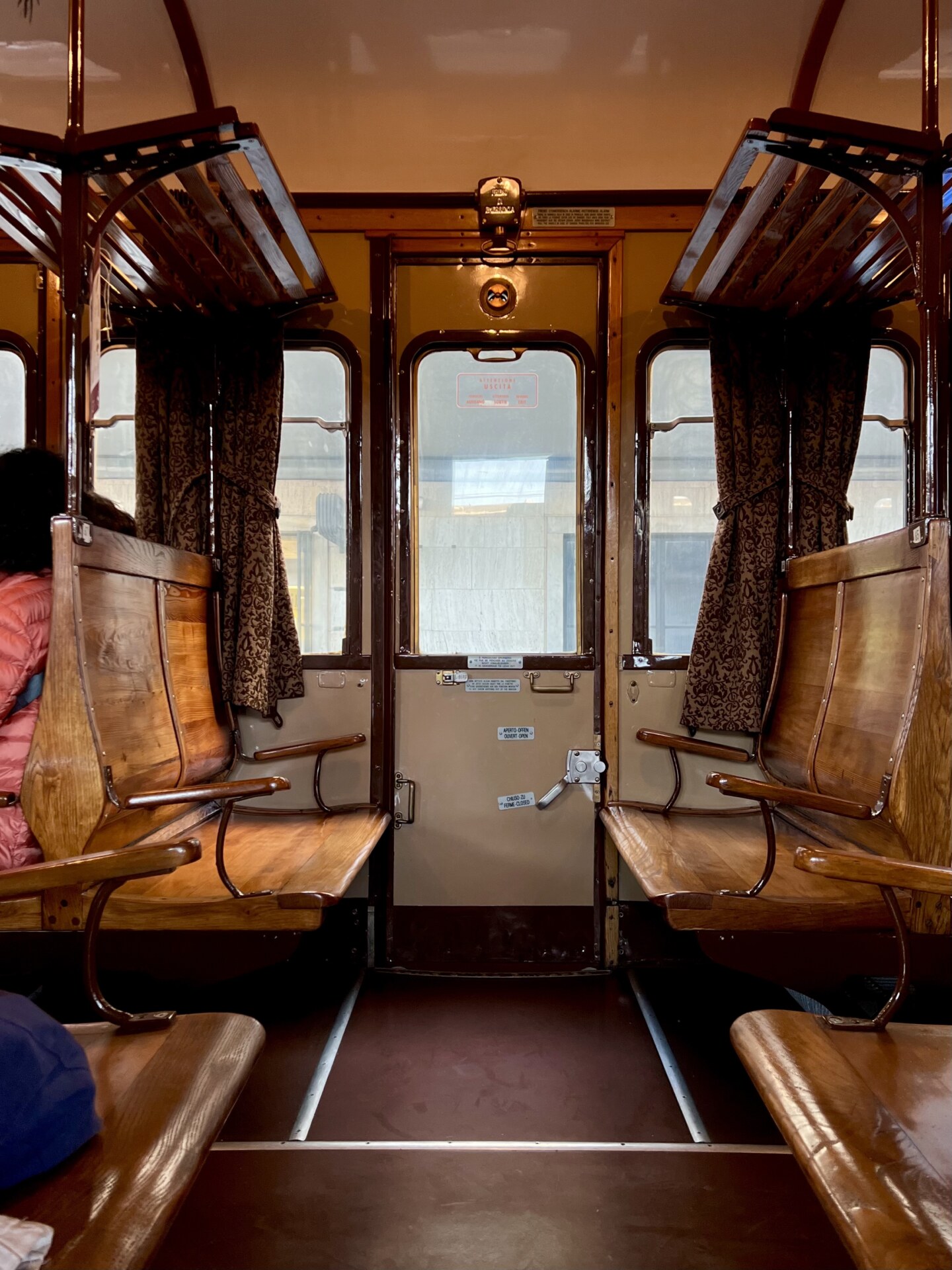
Il Treno di Dante
TRANS-SIBERIAN RAILWAY (TRANS-APENNINE)
Abruzzo: Sulmona to Rivisondoli – Pescocostanzo
Not to be confused with the famous Russian Moscow-to-Vladivostok train line, this specialty Italian route traverses the Apennine mountains of Abruzzo, which journalist and writer Luciano Zeppegno once compared to the Siberian Steppe. Aboard this thrilling journey, you’ll reach heights of over 1,000 meters and coast along riveting twists and turns of mountains and gorges. The line starts at the Sulmona station at 328 meters high and reaches the Rivisondoli – Pescocostanzo station at 1,268.82 meters above sea level. Stops differ depending on the season–as the line runs year-round–but you’ll likely pass through towns Campo di Giove, Palena, Roccaraso, Castel di Sangro, and Rivisondoli-Pescocostanzo. You can go and come back on the same day or disembark at one or more of the connecting towns to explore and either hike/bike in the summer or ski in the winter. The train’s route is considered to be the most beautiful in the country, and we have the large Abruzzo and the Majella National Parks to thank for that.
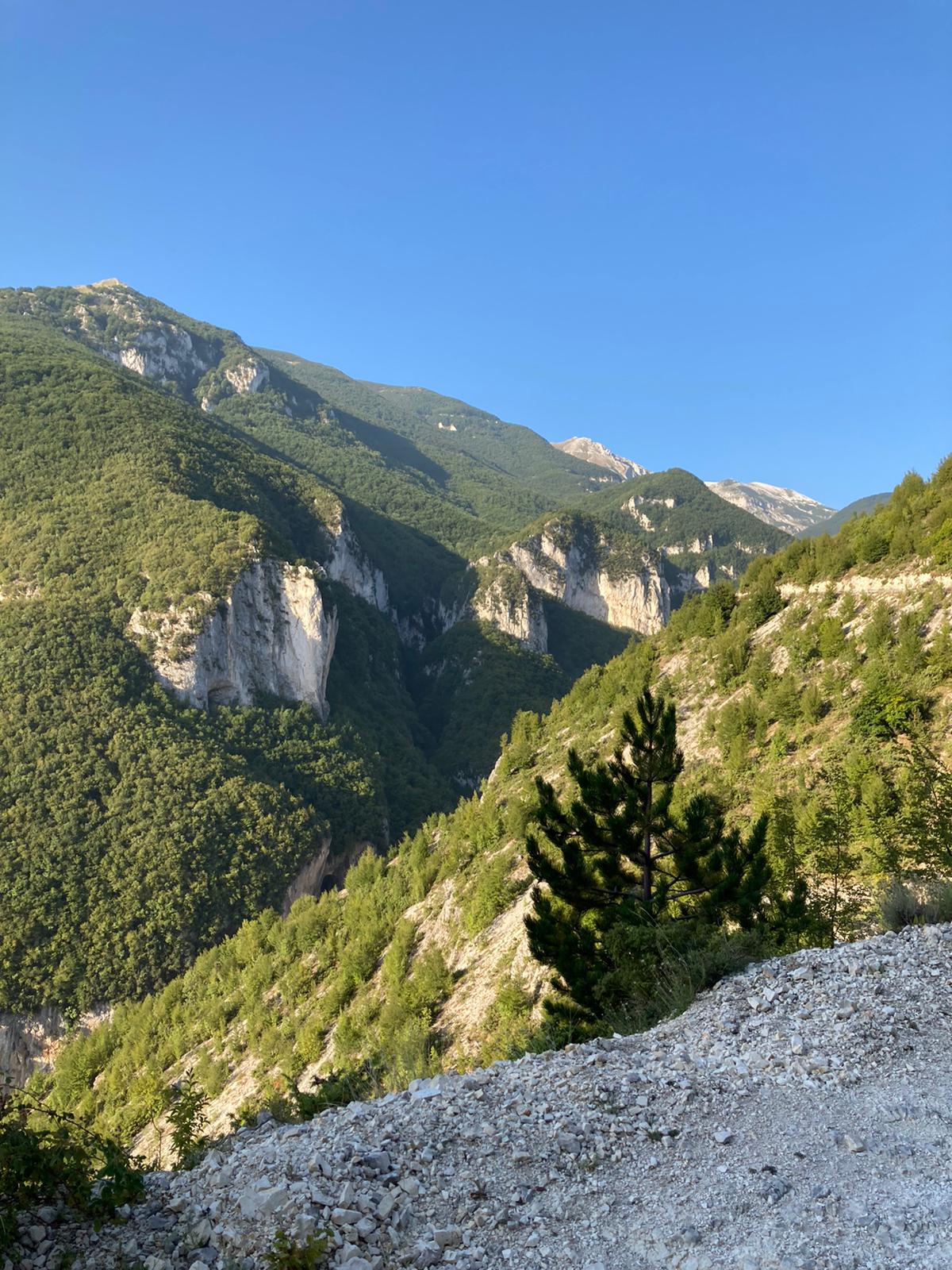
Abruzzo Majella National Park
ARLECCHINO TRAIN
Bologna Centrale to Roma Termini
Built in honor of the Olympic Games in Rome in 1960, retired in 1986, and completely revamped in 2009, the Arlecchino Train returns to the Bologna – Rome railway line in all its former postwar, Made in Italy glory. First-class only, the four-carriage train is adorned with plush armchairs, a bar with coffee served in dainty cups, and two belvederes with panoramic windows. The train’s name–meaning “Harlequin”–comes from its multicolored interiors, conceived by star architect Giò Ponti and designer Giulio Minoletti, and the outside boasts a silvery gray futuristic shape. The renovation is part of a larger effort by Fondazione FS to promote slow tourism, and similar models–like the 1953’s ETR 300 Settebello, the 1957’s ETR 220, and the 1988’s ETR 450 Pendolino–are expected to follow suit. Check the Fondazione FS official website for up-to-date information about this train’s schedule as well as to buy tickets.
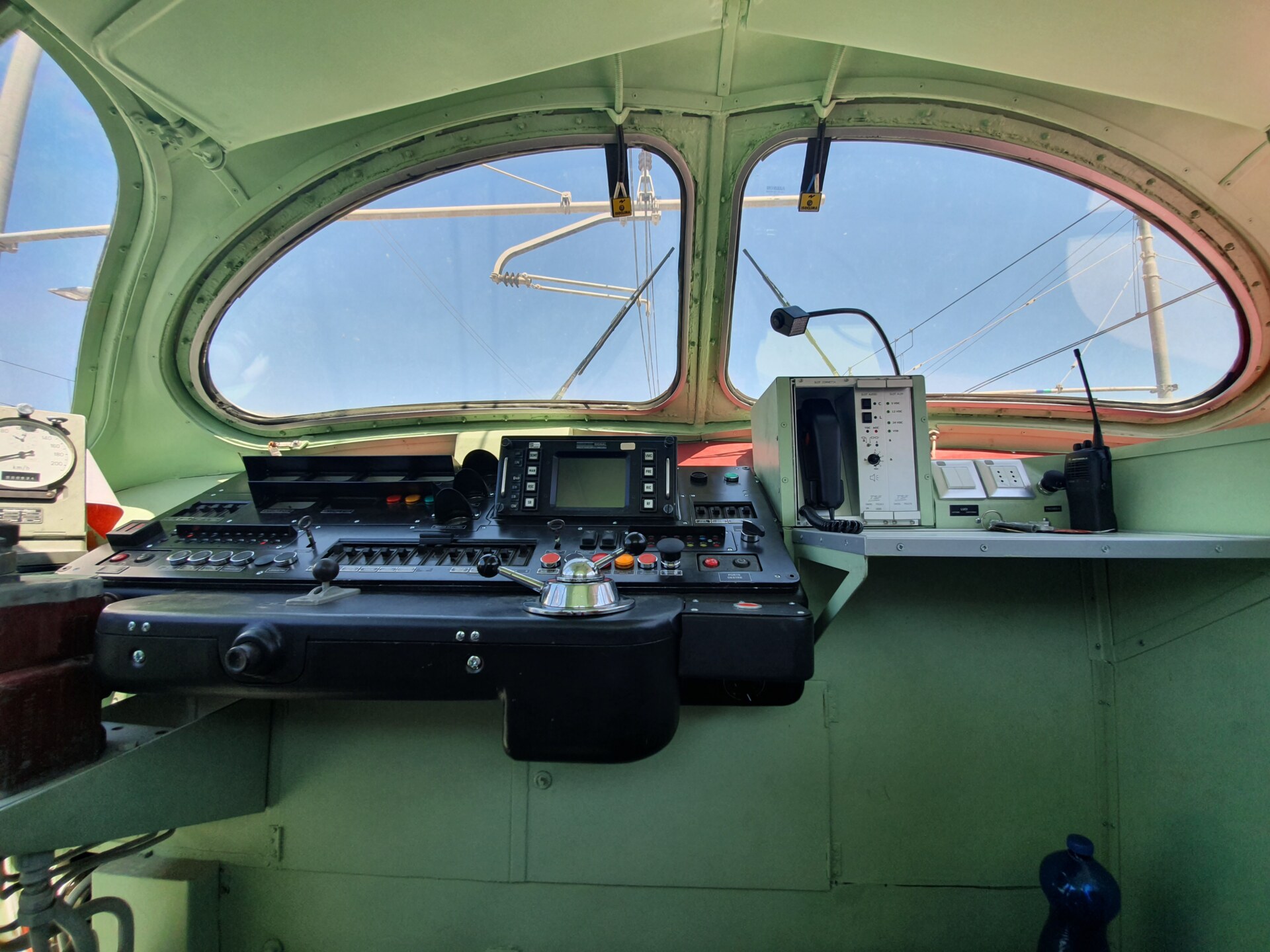
Arlecchino
For breathtaking views aboard a train, however, there’s no need to book ahead or shell out for a luxe experience. For just a couple euros, these regional trains let you see all different flavors of Italy’s corners:
CIRCUMVESUVIANA
Naples to Pompeii to Sorrento
This network of regional lines runs out of Naples and–you guessed it–around Mount Vesuvius, with pretty great views of the volcano to boot. They take you to Pompeii and Sorrento, along with a few other less-touristy destinations like Sarno, Baiano, and Acerra. On that famed Naples – Sorrrento route, you’ll also stop in Castellammare di Stabia, where you can take a cable car to Monte Faito; Torre Annunziata, where you can visit Oplontis; and Ercolano Scavi, where you can easily access the Herculaneum archaeological area. Expect hoards of tourists and locals, and no air conditioning.
THE MUSICAL FLEET
Across Italy
Nearly all regional trains in Italy belong to Trenitalia’s musically themed fleet. You might hop on the Vivalto to get between the towns of the Cinque Terre, the Jazz to get to the outskirts of Rome, the Rock for a quick trip from Bologna to Modena. You’ll find the Pop in Lombardy, the Minuetto in Tuscany, the Swing in Marche, and the Blues in Friuli-Venezia Giulia. Each train exists relatively within its designated region, and the models are all slightly different, some with two stories, some new and hybrid, and some unnervingly rickety. Although these trains don’t play corresponding music to their names–which we think is a shame–remembering which you’ve taken is a great way to keep track of where in Italy you’ve been.
